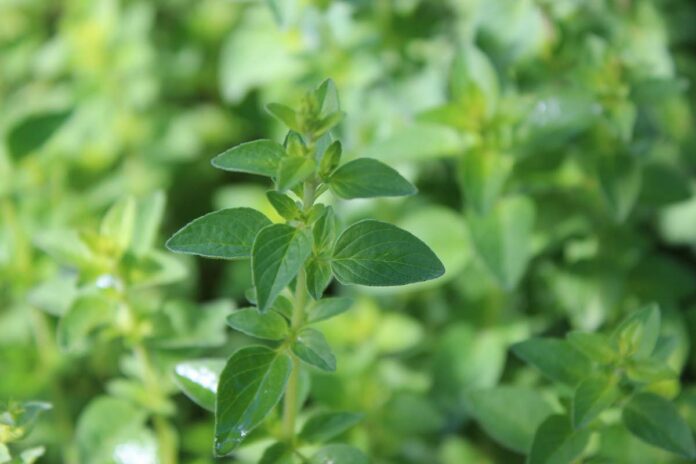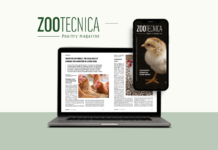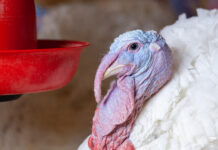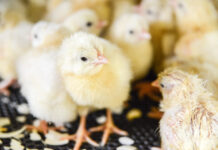
Coccidial vaccination is an alternative to medication programmes, although vaccination can lead to impaired performance.
The objective of this study was to determine the effect of co-administration of an oregano essential oil (OEO) product in feed and an attenuated Eimeria vaccine on performance and immunity of vaccinated birds. A total of 1,750 Cobb broilers was randomly allocated to 5 treatment groups (7 replicates/treatment 50 birds/replicate): CON – salinomycin (66 g/t); VACC – HatchPac Cocci III (Merial, USA) single dose Day 0; OEO – OEO (300 g/t); OEOD10 – OEO (300 g/t) from Day 10; SAL/OEO – salinomycin (66 g/t), OEO (150 g/t).
Birds in OEO, OEOD10 and SAL/OEO were vaccinated on Day 0 with the anticoccidial vaccine. With the exception of VACC and OEOD10, in-feed treatments were fed the entire study, 0-42 days. Birds were reared in floor pens on clean litter. Litter samples were collected weekly for oocyst enumeration. On Day 21, 5 birds/pen were moved to cages (35 birds/treatment, 7 replicates) and challenged orally with a mixed Eimeria infection.
Coccidia-free birds were used as a positive control (POS) (5 birds/cage, 7 replicates). Birds were fed an untreated ration for the challenge phase. On Day 27 birds were euthanised, weight recorded and coccidial lesion scored (LS). Coccidia were detected in the litter of SAL from 10 days indicating contamination. Body weight gain in VACC was significantly lower than SAL/OEO; all other treatments did not differ significantly. Feed conversion ratio was significantly higher in both VACC and OEOD10 versus SAL and SAL/OEO while VACC, OEO and OEOD10 did not differ significantly. Lesion scores were significantly lower in all treatments versus POS while LS in SAL and SAL/OEO was significantly higher than VACC. Oocyst enumeration profile demonstrated a peak in VACC on Day 21 that was absent in all other treatments. In conclusion, the inclusion of OEO in poultry feed from Day 0 or Day 10, either alone or in combination with salinomycin, and fed to birds vaccinated with an attenuated Eimeria vaccine on Day 0 had no adverse effect on the development of coccidial immunity. The combination of OEO and salinomycin significantly lowered Day 0-42 FCR versus birds receiving vaccine or OEO alone. The use of OEO in combination with an Eimeria vaccine or an ionophore offers another potential tool in the management of coccidiosis.
Introduction
Management of coccidiosis has traditionally been via medication or vaccination. Anticoccidial programmes typically comprise a chemical and an ionophore component. Ionophores are under increasing regulatory and consumer scrutiny for their antimicrobial activity. Coccidial vaccines comprise Eimeria strains that are either attenuated (typically via repeated passage) or non- pathogenic or unmodified strains of field isolates. Coccidial vaccines have been proposed to restore anticoccidial drug sensitivity to circulating Eimeria populations in a poultry house. However, coccidial vaccines have been shown to impair bird performance. Oregano essential oil (OEO) based products have demonstrated compatibility with coccidial vaccines, although determination of immune status following challenge was not determined.
The objective of the study was to determine the effect of a commercial oregano essential oil product on the development of immunity following vaccination with an attenuated coccidial vaccine.

Method
A total of 1,750 Cobb 500 male chicks was allocated to 6 treatment groups, with 7 replicates per treatment as per Table 1. Each replicate (experimental unit) comprised 50 birds. Feed and water were available ad libitum. Feed rations were corn/soya-based and free of all medication with the exception of treatment 1. Feed for all other treatments contained the test material as per Table 1. On Day 0, all birds in treatments 2-5 received a single dose of Eimeria vaccine, HatchPak Cocci III (Merial, USA) via hatchery-spray. Birds were reared on earth floor pens on 10 cm deep clean litter (wood shavings) until Day 42. Average body weight gain was determined on Day 28 and 42 and FCR calculated. Mortality was determined daily and European Production Efficiency Factor (EPEF) calculated. Litter samples were collected weekly from each pen and the number of oocysts enumerated via salt flotation.
For immunity assessment, 5 birds were randomly selected from each pen on Day 21 and transferred to wire-floor cages, 7 cages/treatment. Each bird was challenged orally with 1 ml of mixed Eimeria (~100,000 oocysts E. acervulina, ~75,000 E. maxima and ~50,000 E. tenella). A separate group of birds which were naïve and coccidian-free (5 birds/cage, 7 cages) were also inoculated and acted as a positive control group (POS) for the immunity assessment only. On Day 27, all birds were euthanised and scored for coccidial lesions according to the system of Johnson and Reid (1970). Data were analyzed by ANOVA using Minitab v14 (Minitab Inc, USA) and statistical significance declared at P≤0.05.

Results
There was no significant effect of treatment on Day 28 body weight gain, EPEF or mortality (Table 2). Bodyweight gain on Day 42 in VACC was significantly lower than SAL/OEO, 2.420 and 2.586 kg, respectively. All other treatments did not differ significantly from VACC or SAL/OEO. Feed conversion ratio was significantly higher in both VACC and OEOD10 versus SAL and SAL/OEO, while FCR in OEO, OEOD10 and VACC only differed numerically. Feed conversion ratio in OEO (1.718) was also significantly lower versus SAL/OEO (1.663). The average lesion score in POS was significantly higher than all other treatments. Additionally, the average lesion score in VACC was significantly lower than SAL and SAL/OEO, 1.34, 1.68 and 1.71 respectively but VACC only differed numerically from OEO (1.47) and OEOD10 (1.65). SAL/OEO, SAL, OEO and OEOD10 did not differ significantly.
A peak in litter oocyst counts was observed in OEO and OEOD10 on Day 14 followed
7 days later by a peak in VACC on Day 21 (Figure 1). The peak in oocyst counts observed in oregano essential oil and OEOD10 were approximately 60-70% lower than VACC. Litter oocyst counts continued to increase in SAL/OEO from Day 7 until the end of the study. Coccidial contamination in SAL was detected on Day 14 and oocyst counts continued to increase until peaking on Day 35.

Discussion
The inclusion of a commercial oregano essential oil product did not interfere with the development of immunity following vaccination with an attenuated coccidial vaccine as determined by lesion scores. Body weight gain in birds fed oregano essential oil was numerically but not statistically higher than vaccinated birds without oregano essential oil. Similarly, some authors did not demonstrate a performance benefit in birds vaccinated with the coccidial vaccine Livacox and fed essential oils of laurel leaf, oregano and lavender. Oregano essential oil has been shown to lower oocyst counts in the litter from vaccinated birds but not stop oocyst recycling completely, as was observed in the current study. In the current study, oregano essential oil fed to birds 10 days after vaccination did not significantly affect performance or immunity. Indeed, FCR and body weight gain were numerically better than VACC despite poorer performance at 28 days, suggesting performance recovery due to compensatory growth. oregano essential oil is known to improve immune and antioxidant status in addition to balancing the microbiota, biological processes known to be important in the host response to Eimeria infection. The combination of oregano essential oil and salinomycin appeared highly effective at inhibiting coccidial recycling in litter with a minimal impact upon the development of coccidial immunity. Furthermore, such a combination also appeared to have a positive impact on performance. Some authors did not report any synergy between oregano essential oil and monensin in E. tenella challenged birds, despite using 24 ppm oregano essential oil versus 15 ppm in the current study. However, presentation of the oregano essential oil in their study was substantially different from the mineral carrier used in the current study. A comparison with salinomycin in the current study was difficult due to contamination of the treatment group (most likely from the earth floor). In conclusion, the inclusion of oregano essential oil in poultry feed from Day 0 or Day 10, either alone or in combination with salinomycin, numerically improved the performance of birds vaccinated with an attenuated Eimeria vaccine on Day 0 with no adverse effect on the development of coccidial immunity. The use of oregano essential oil in combination with an Eimeria vaccine or ionophore offers another potential tool in the management of coccidiosis.
References are available on request
From the Proceedings of 2019 Australian Poultry Science Symposium
















